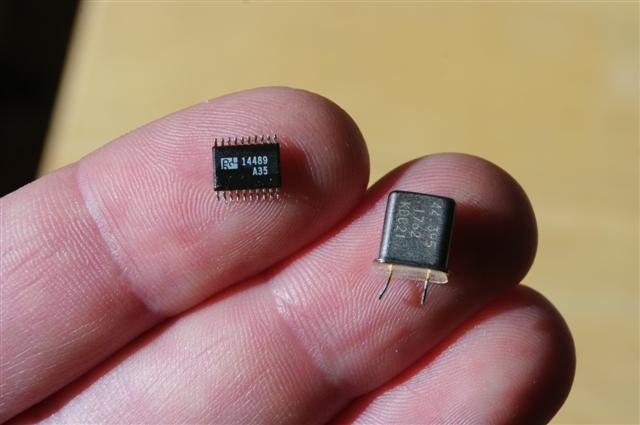On/around 28 July 2012 it was reported that the 70cm W9YT/R repeater, a Kenwood TKR-850, was having some sensitivity issues. It was notably deaf, although not completely. Strong signals could still open the repeater but anything less than a high-power mobile radio in direct sight of the repeater antenna may not work.
After ruling out the easy suspects (antenna, duplexer, feedline, lightning arrestor) the repeater was the remaining suspect.
The Kenwood service manual for this repeater shows "surge supression" diodes and a preamp transistor are the first active components in the receive path prior to the first mixer. We decided to replace these parts first.
Click on any photo for a larger view.
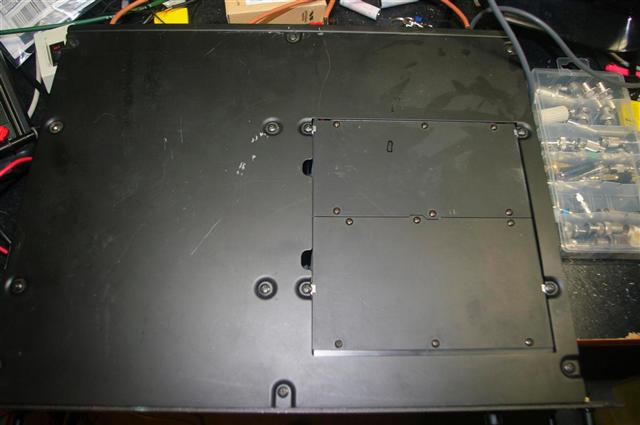
Top view of the repeater. Underneath the top door is the PA board.
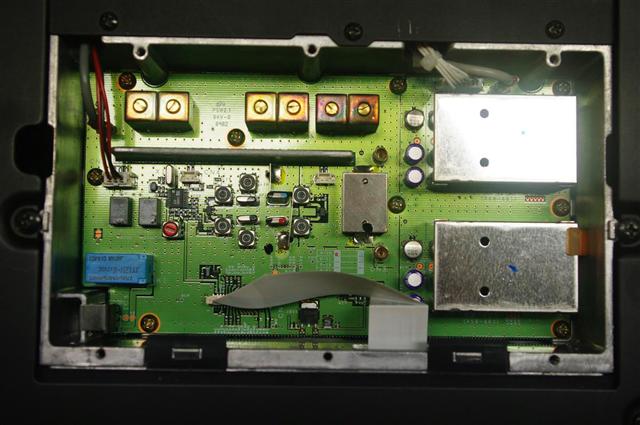
And door number two. The parts I need to access are underneath this board, between
the coils. Removal is easy enough, two rocket connectors, one flex cable, two
multi-pin connectors and ten screws.
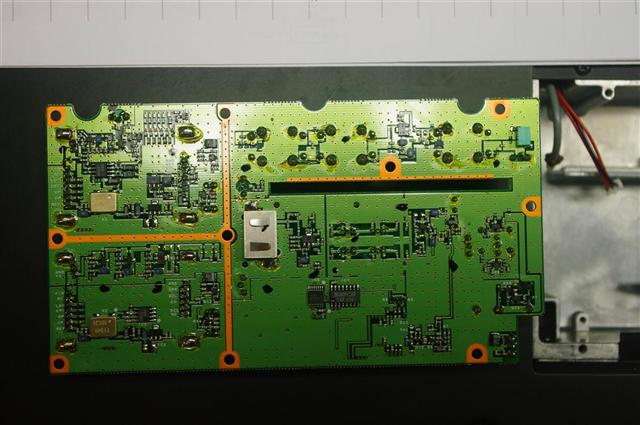
Board removed, lower side. Upper-right is where the parts in question are.
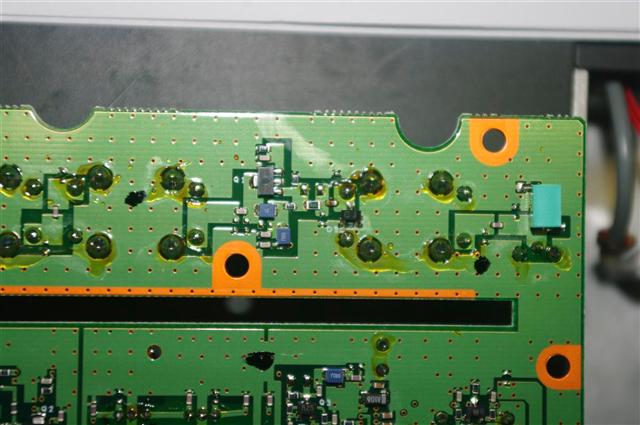
On this model, the surge supression diodes, D9, is a HSM88AS and the first
preamp, Q1 is a 2SC3357.
The HSM88AS cross-references to a common BAT17 Schottky diode, $0.44 each in single quantities from DigiKey.
The 2SC3357 cross-references to an NEC NE85634, $1.25 in single quantities from DigiKey.
(That's not my solder flux residue.)
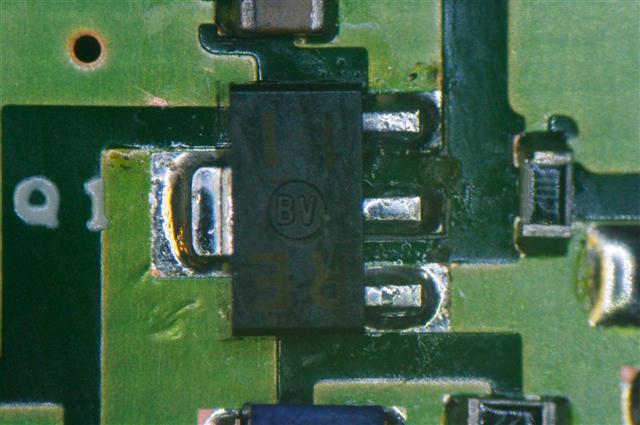
10x enlargement of a replaced Q1. This is an SOT-89 part, the actual size of the
case is roughly 2.5mm x 4.5mm.
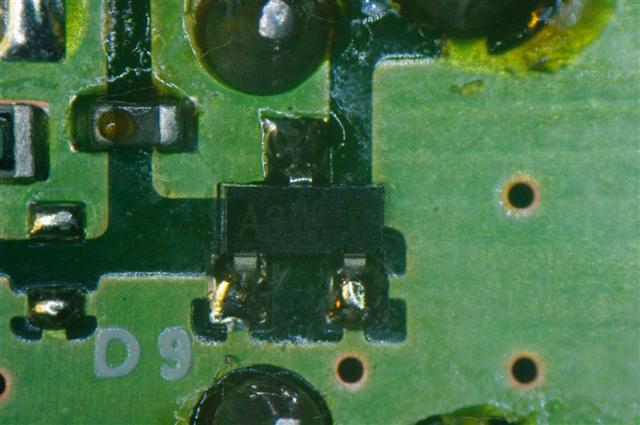
10x enlargement of a replaced D9.
After replacing the premp and surge supression diode, the receive sensitivity appears to be normal and the W9YT 70cm repeater is back on the air.
update - 9/2012
The diodes didn't fix it. The repeater would lose significant sensitivity within 12 hours (or sooner) of power-on.
Another local ham offered to take a look -- using his service monitor he verified the repeater duplexer tuning and measured the system sensitivity. I think he measured 700 microvolts were required to break squelch? Wow!
In addition to the service monitor, he also brought a can of spray component cooler.
Cooling a certain area of the TX/RX board immediately restored sensitivity. The area was generalized to be the FM demodulator chip and the associated crystal. As they were both relatively inexpensive I ordered both the chip and crystal from Kenwood parts.
On the workbench at first power-up, the unsquelched audio was the familiar FM white noise. This slowly changed over the course of 30 seconds to a muffled hiss. It sounded similar to an extremly weak FM signal that just isn't strong enough.
I replaced the crystal first. No change; same behavior.
Then I replaced the TK14489 NBFM IF demodulator chip.
This resulted in a definite improvement on power-up and through the rest of the weekend.
After five plus years, the repeater sensitivity remains well within acceptable levels.
This page last modified Mon Mar 26 13:26:02 CDT 2018 by Tim Czerwonka WO9U.
The author can be reached at: tczerwonka [at] gmail [dot] com.
